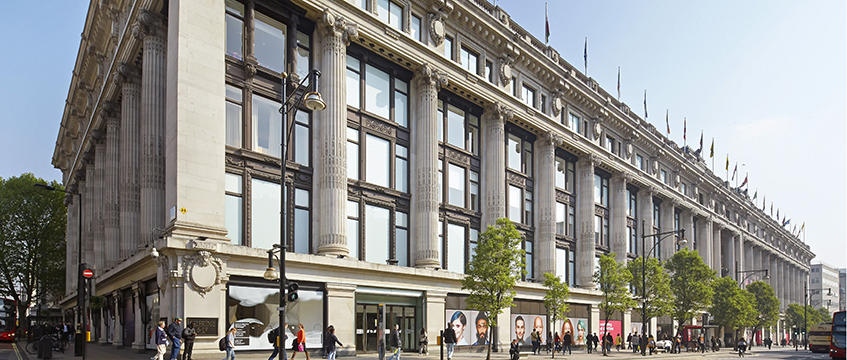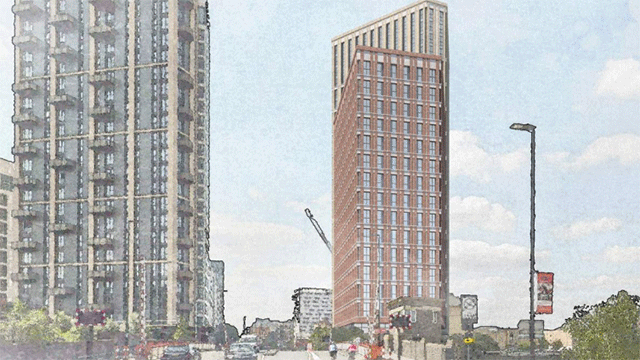COMMENT As London Liverpool Street station celebrates its 150th anniversary, a new display at the station shows how it has continually evolved, pushing the boundaries of size, scale and service to meet the needs of both passengers and those who live and work in the City of London.
Much has changed in 150 years, but the importance of the station to the capital’s workforce has remained. With passenger numbers set to double in the next 25 years, Britain’s busiest station is looking forward to a more prosperous, inclusive and sustainable future.
The opening of the Elizabeth Line, which has revolutionised travel across London, has partly driven the recent increase in passengers, with there now being 80.4m journeys a year, with the overall number of people using the station exceeding 140m when you include Underground passengers and station customers.
Now, Network Rail Property, in partnership with Sellar and MTR, has put forward plans to transform the overall customer experience for the station’s millions of users. The current cost of living crisis and the pressure on the public purse demand innovative ways of funding large-scale infrastructure projects. The proposed regeneration will deliver greater accessibility and a world-class customer experience, which will be achieved by unlocking commercial value, enabling it to be brought forward at no additional cost to passengers or the taxpayer.
Big debate
More than £450m of station improvements will be funded through the delivery of high-quality commercial space built above the station. The infrastructure upgrade will ensure the station can cope with the projected growth in passenger numbers, with a new upper concourse, new lifts and escalators, and a 60% increase in ticket turnstiles.
Although the commercial real estate market has become increasingly polarised in recent years, research by Knight Frank has shown that there are high levels of demand for prime, high-quality, connected office space, which this project will deliver, playing an important part in supporting economic growth in the capital.
We understand that our plans have raised debate with some heritage groups, which are rightly keen to preserve the Gothic architectural style of the station. The station was once dubbed “the dark cathedral”, which was partly due to the soot from the steam trains as well as the design. Projects of this scale are hugely complex and have the widest range of stakeholders to consider. The balancing view, to create generational change and infrastructure investment on this scale, is part of the debate.
Built in 1874 as the new terminus for the Great Eastern Railway, Liverpool Street was designed to integrate with the Metropolitan Railway (now London Underground’s Metropolitan Line). By 1884, it was handling 80,000 passengers a day and suffered from overcrowding. An extension in 1894 made Liverpool Street the largest railway station in London, and one of the biggest in the world. A major redevelopment in 1985 assisted as passenger numbers grew but was not always sympathetic to preserving the station’s heritage.
Our new plans will restore and celebrate the station’s unique historical features, which were greatly altered in the 1985 upgrade. None of the Victorian elements will be demolished. Instead, the historic ballroom of the Great Eastern Hotel will be opened to passengers and views to the original Victorian train shed from the concourse will be reinstated to how they were 150 years ago.

Get connected
Our cities are always changing, and transport infrastructure must adapt with them. Main line stations are centres of growth and investment, becoming seven-days-a-week, landmark destinations with customers and the community dropping in to work, eat, drink and shop. We need to create the right space and variety of offer to cater for this increasing demand.
King’s Cross and London Bridge stations demonstrate successful regeneration projects blending infrastructure investment and commercial investment to generate economically vibrant places. Delivering a connected transport hub is critical to maintaining the City of London as a vibrant and thriving area, as part of a globally successful UK.
Liverpool Street station has never shied away from ambitious plans to make journeys better for passengers. Forty years since the last significant investment, it is now time for the station to reinvent itself once again, ensuring that Liverpool Street remains a symbol of progress and a centre for growth and investment, centred around state-of-the-art transport infrastructure, for generations to come.
Robin Dobson is group property director at Network Rail











